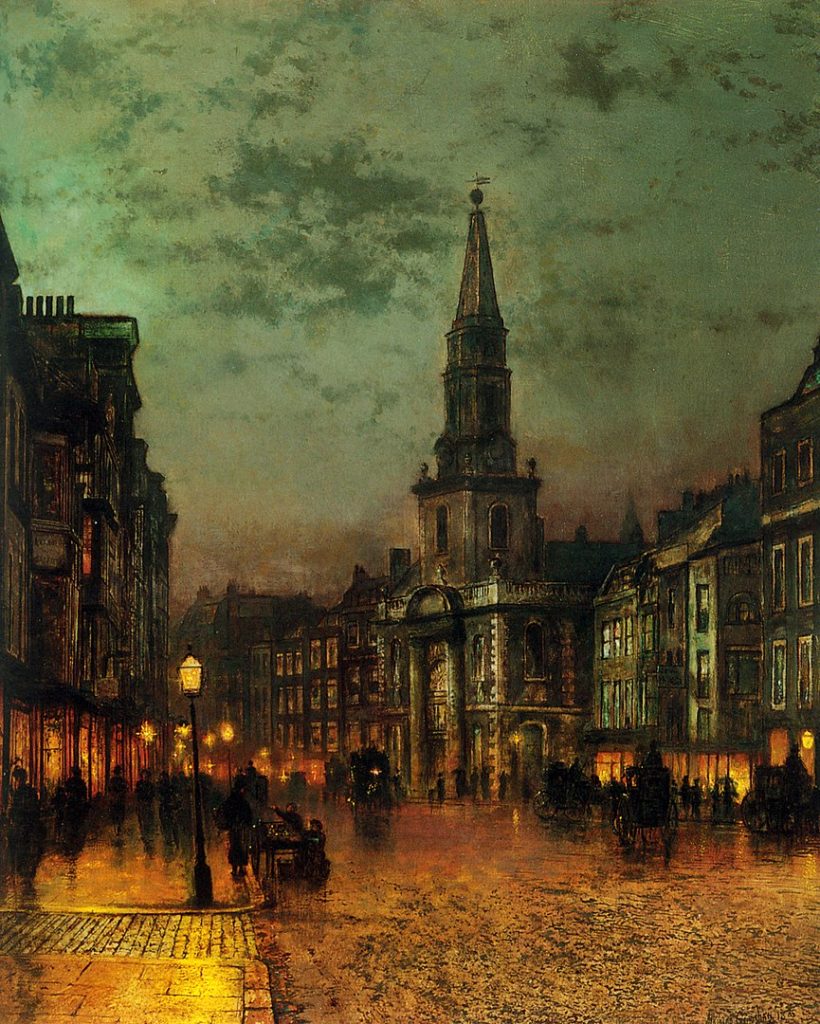
John Atkinson Grimshaw (1836–1893) was a Victorian-era artist whose evocative and atmospheric paintings captured the essence of the changing urban and rural landscapes of 19th-century England. Born on September 6, 1836, in Leeds, Yorkshire, Grimshaw’s life journey would take him from a modest upbringing to becoming one of the most renowned and distinctive painters of his time.
Grimshaw’s early years were marked by the industrial transformation that swept through England during the Victorian era. The son of a policeman, he demonstrated a keen interest in art from a young age, and his parents supported his creative inclinations. At the age of 13, Grimshaw entered the Leeds School of Art, where he began his formal artistic training. His early works already displayed a proficiency in technique and a fascination with capturing the interplay of light and shadow.
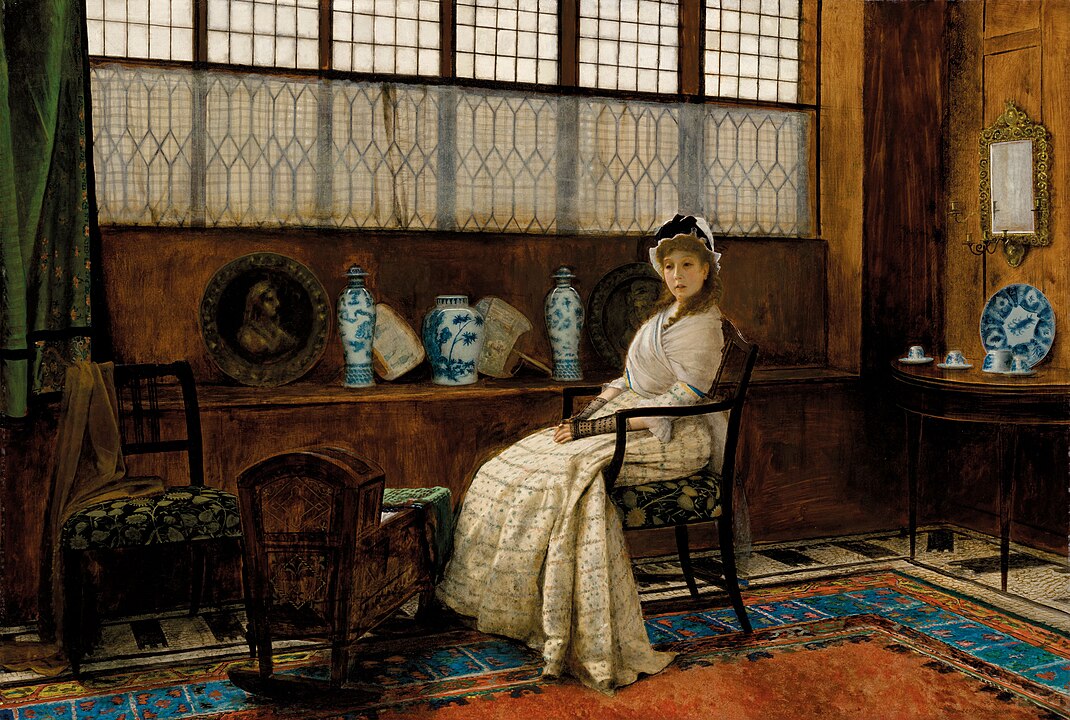
In the mid-1850s, Grimshaw’s family faced financial difficulties, and he had to leave the art school to work as a clerk for the Great Northern Railway. This period of his life, though challenging, provided him with an intimate understanding of the industrial landscape and the effects of urbanization on the English countryside. Despite the demands of his day job, Grimshaw continued to nurture his artistic talent during his evenings and weekends.
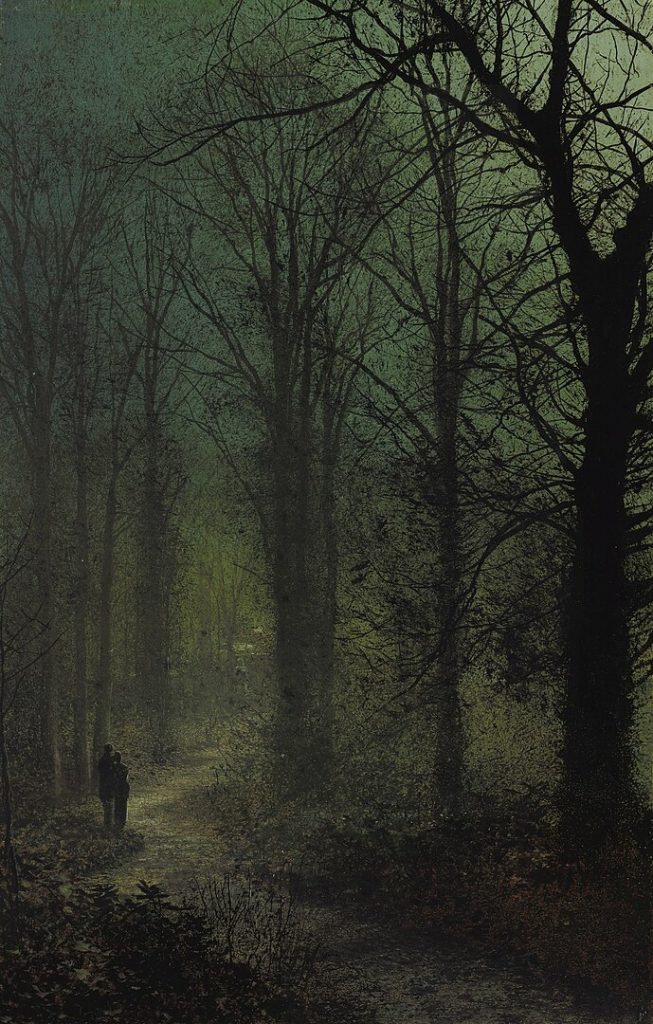
In 1861, Grimshaw married his cousin Frances Theodosia Hubbarde, and the couple went on to have six children. Despite the responsibilities of family life, Grimshaw’s passion for art persisted, and he began to exhibit his paintings locally. His early works primarily focused on landscapes, particularly scenes of the Yorkshire countryside, showcasing a mastery of detail and an ability to evoke a sense of tranquility.
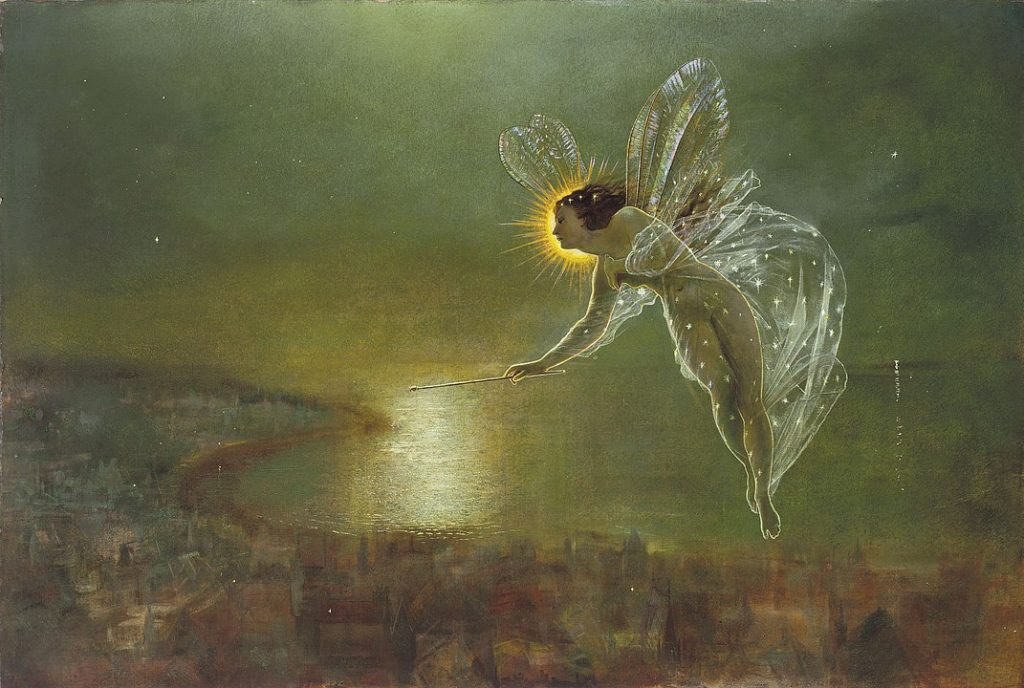
Grimshaw’s artistic career gained momentum in the 1870s when he moved to London. The bustling metropolis provided him with new subjects for his paintings, and he embraced the urban landscape with a distinctive style that set him apart from his contemporaries. His nighttime scenes, in particular, would become his trademark, featuring gas-lit streets, wet pavements, and reflections that captured the atmospheric effects of artificial light on the rain-soaked city.
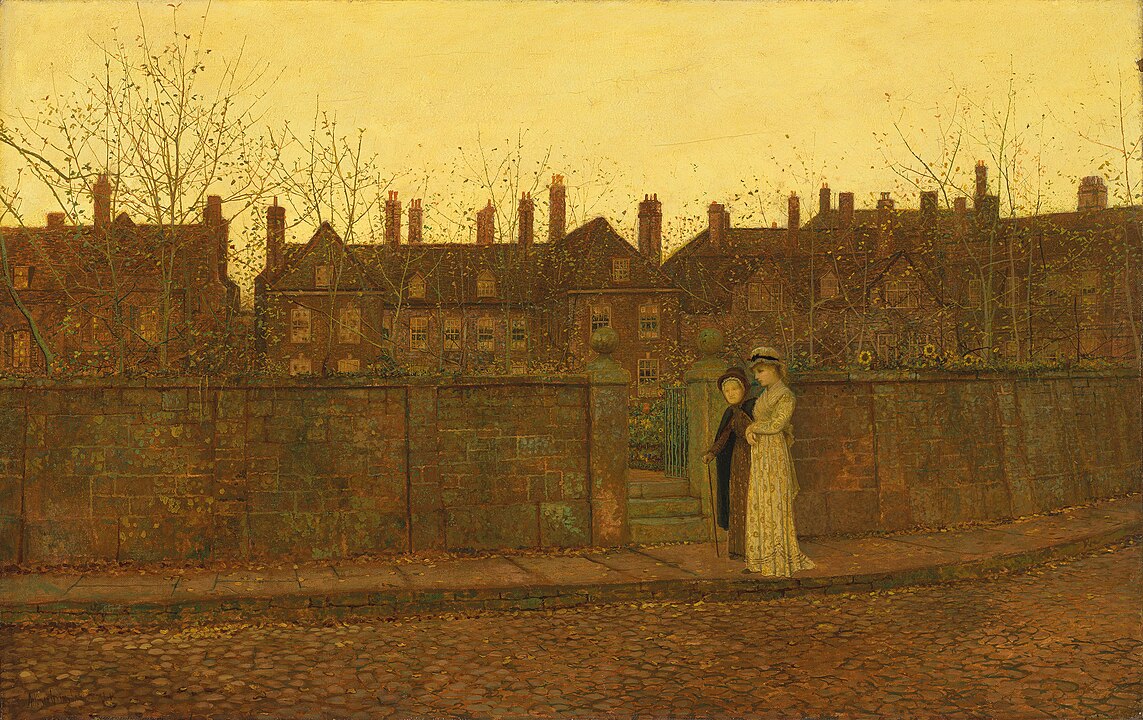
One of Grimshaw’s most famous paintings, “At the Park Gate,” painted in 1878, exemplifies his ability to infuse ordinary scenes with a magical quality. The painting portrays a gas-lit park gate at dusk, surrounded by autumn foliage. The warm glow of the gas lamps contrasts with the cool tones of the evening, creating a captivating and nostalgic atmosphere. This piece marked a turning point in Grimshaw’s career, garnering attention and critical acclaim.
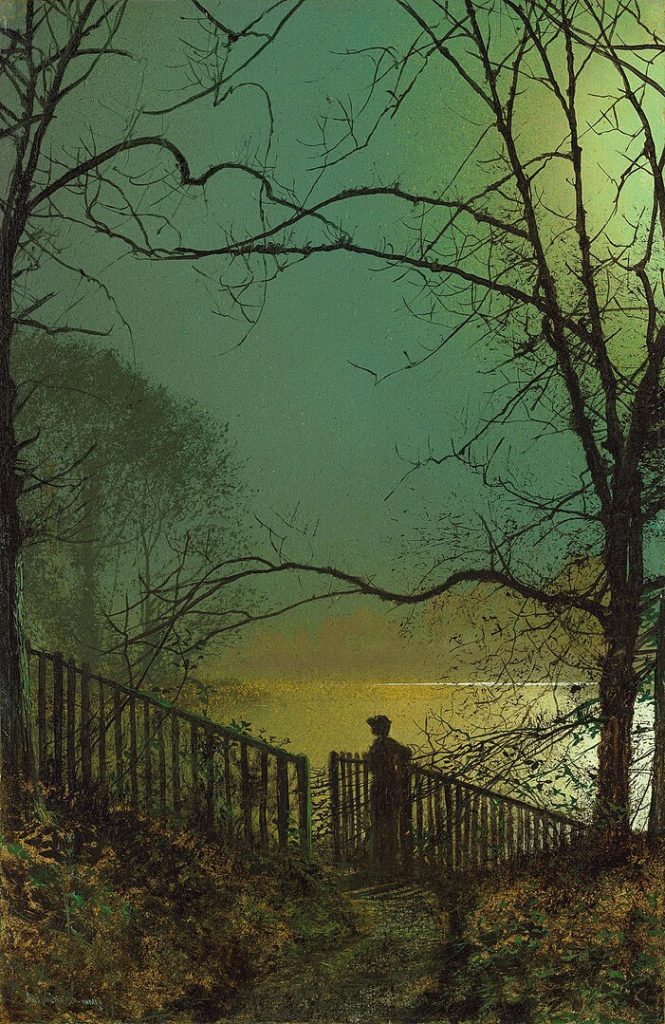
Grimshaw’s nocturnal scenes, often featuring moonlit streets and tranquil waterfronts, became his signature style. His use of vibrant colors and meticulous attention to detail brought a unique charm to his urban landscapes. Notable works such as “Liverpool from Wapping” and “Reflections on the Aire: On Strike” showcase his ability to capture the play of light on water and his fascination with the effects of industrialization on the urban environment.
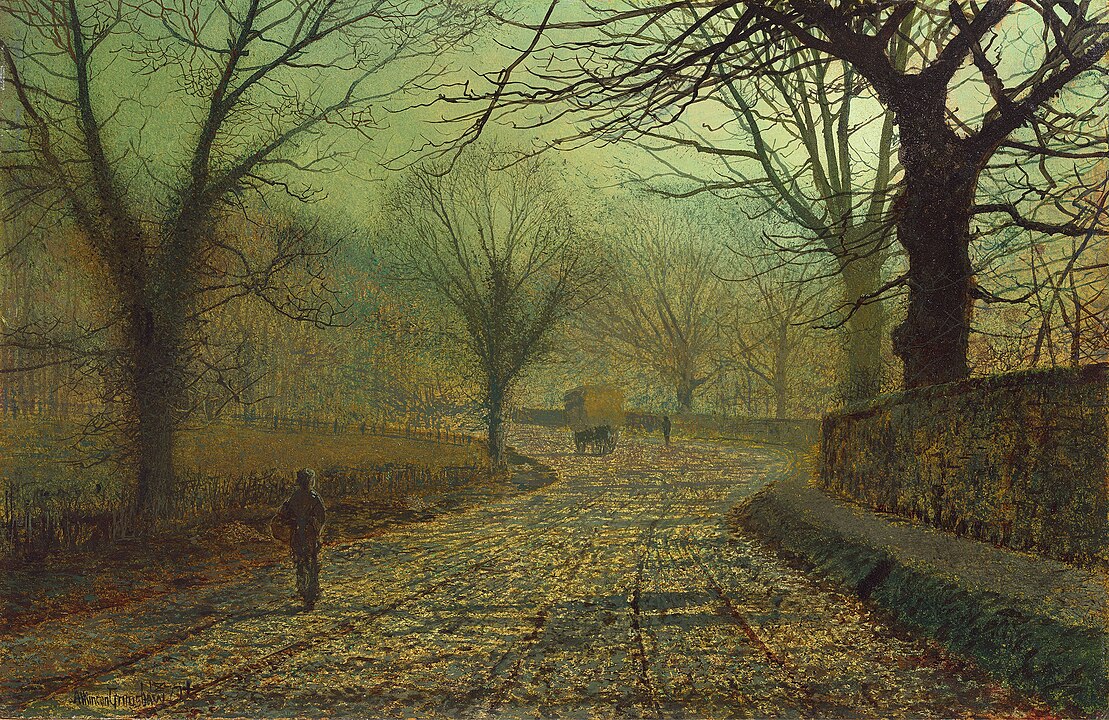
While Grimshaw gained recognition for his cityscapes, he continued to paint landscapes and coastal scenes, exploring the diverse facets of the English countryside. His seascapes, such as “Shipping on the Clyde” and “Scarborough by Moonlight,” reflected his enduring fascination with the interplay of light and water.
Despite his success, Grimshaw faced financial challenges throughout his career. His paintings, though admired, did not always translate into significant financial gains. However, Grimshaw’s commitment to his art remained steadfast, and he continued to produce a remarkable body of work.
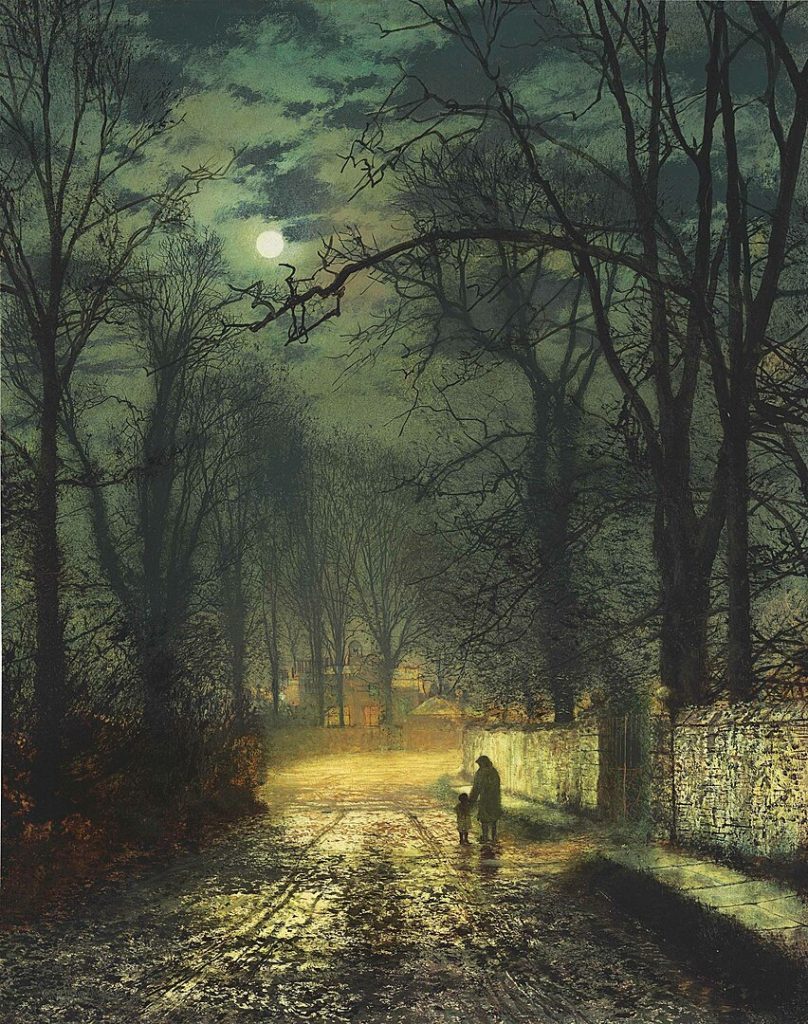
Tragically, John Atkinson Grimshaw’s life was cut short when he succumbed to tuberculosis on October 13, 1893, at the age of 57. His death marked the end of an era for Victorian art, but his legacy endured. Grimshaw’s influence continued to resonate, inspiring subsequent generations of artists and admirers.
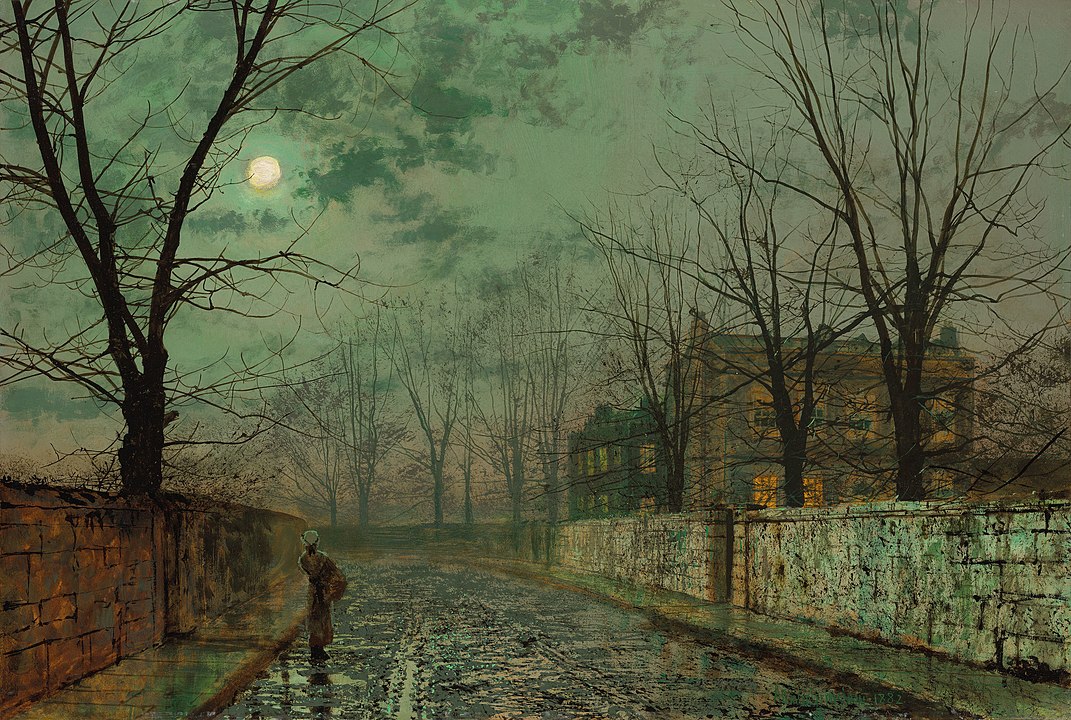
In the decades following his death, there was a renewed appreciation for Grimshaw’s work. Collectors and art enthusiasts recognized the timelessness of his paintings, and his pieces became highly sought after. Today, Grimshaw is celebrated as a master of atmospheric effects and a pioneer of the nocturnal urban landscape genre.
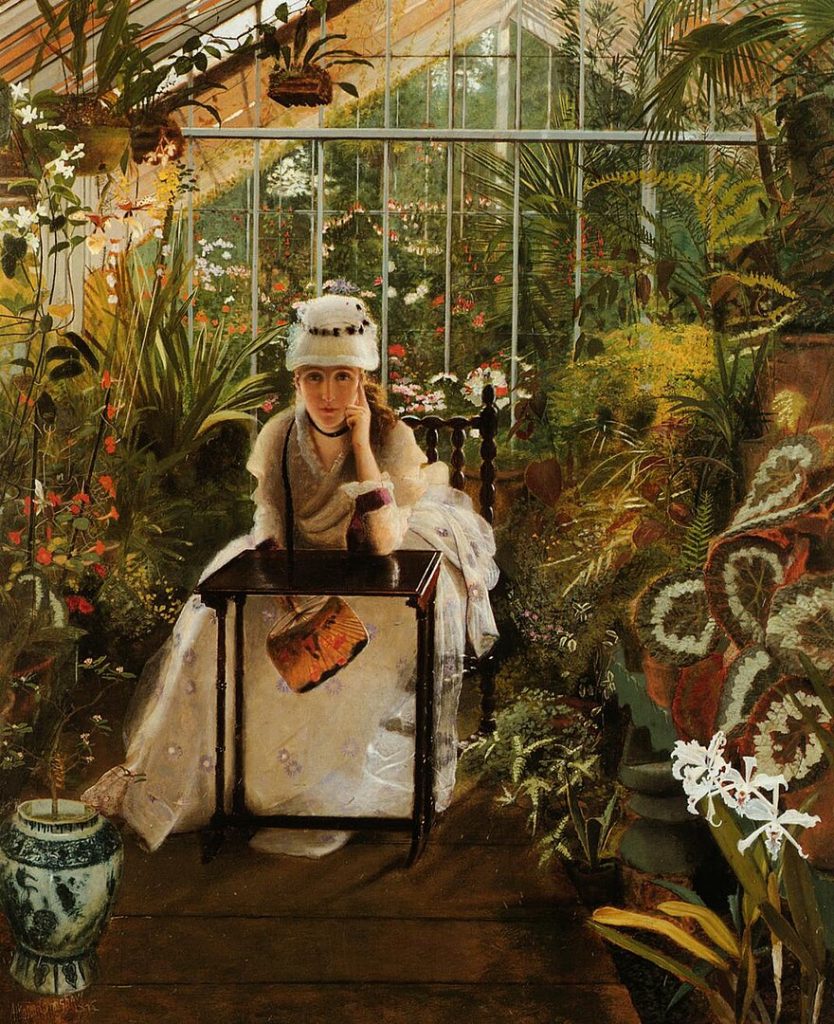
The enduring allure of Grimshaw’s paintings lies in his ability to transform ordinary scenes into poetic and enchanting moments. His legacy lives on through the continued admiration of his works, which remain windows into a bygone era, capturing the beauty and complexity of 19th-century England. John Atkinson Grimshaw’s contributions to art are a testament to the power of an artist’s vision to transcend time and transport viewers to a world where reality is tinged with a touch of magic.




